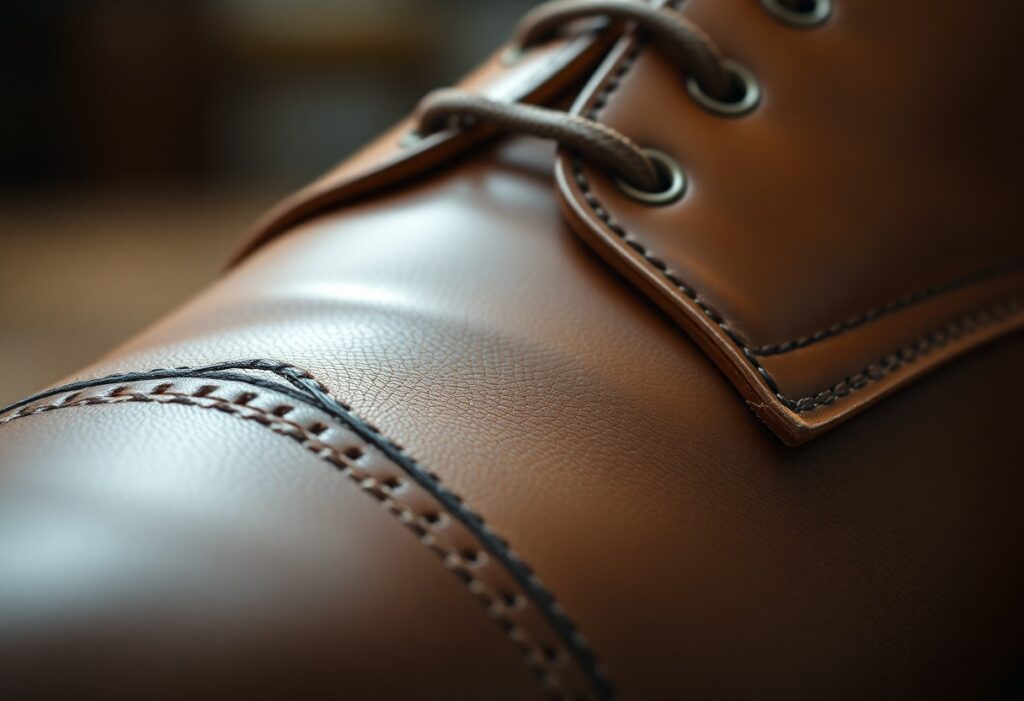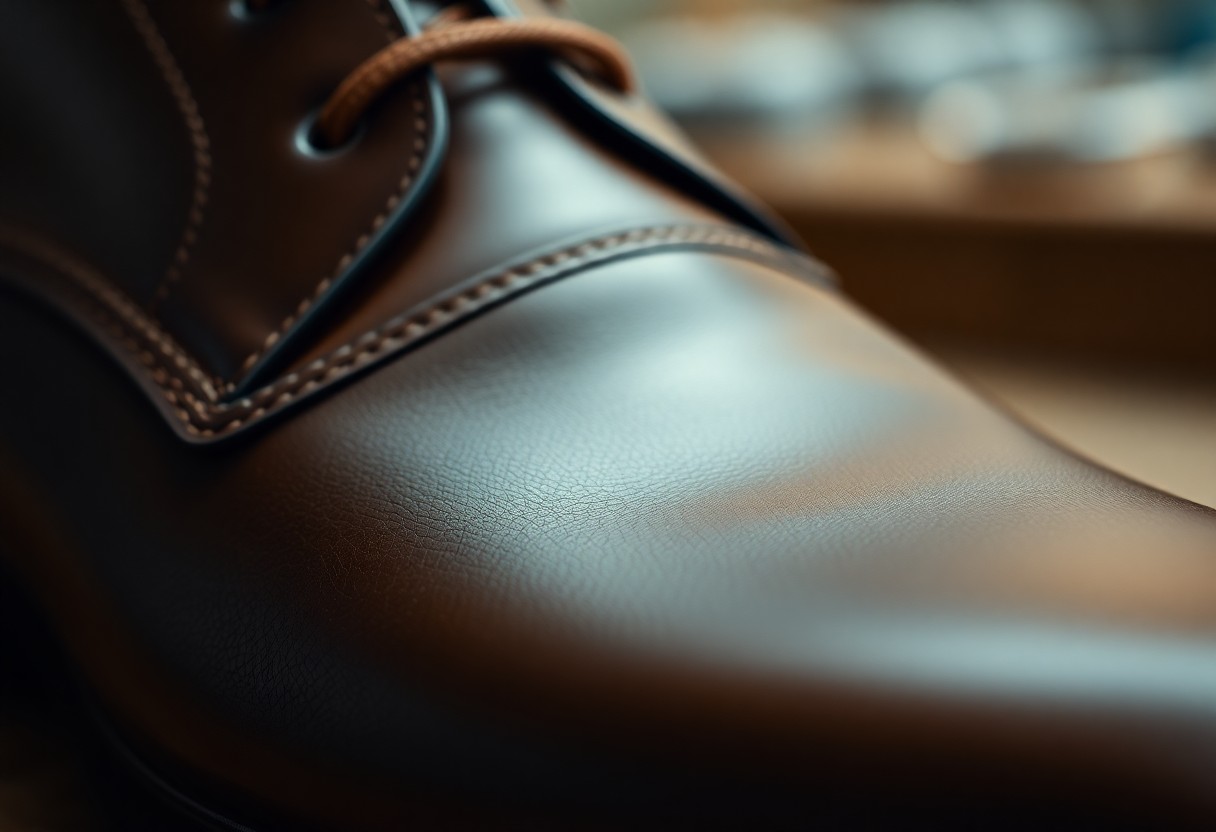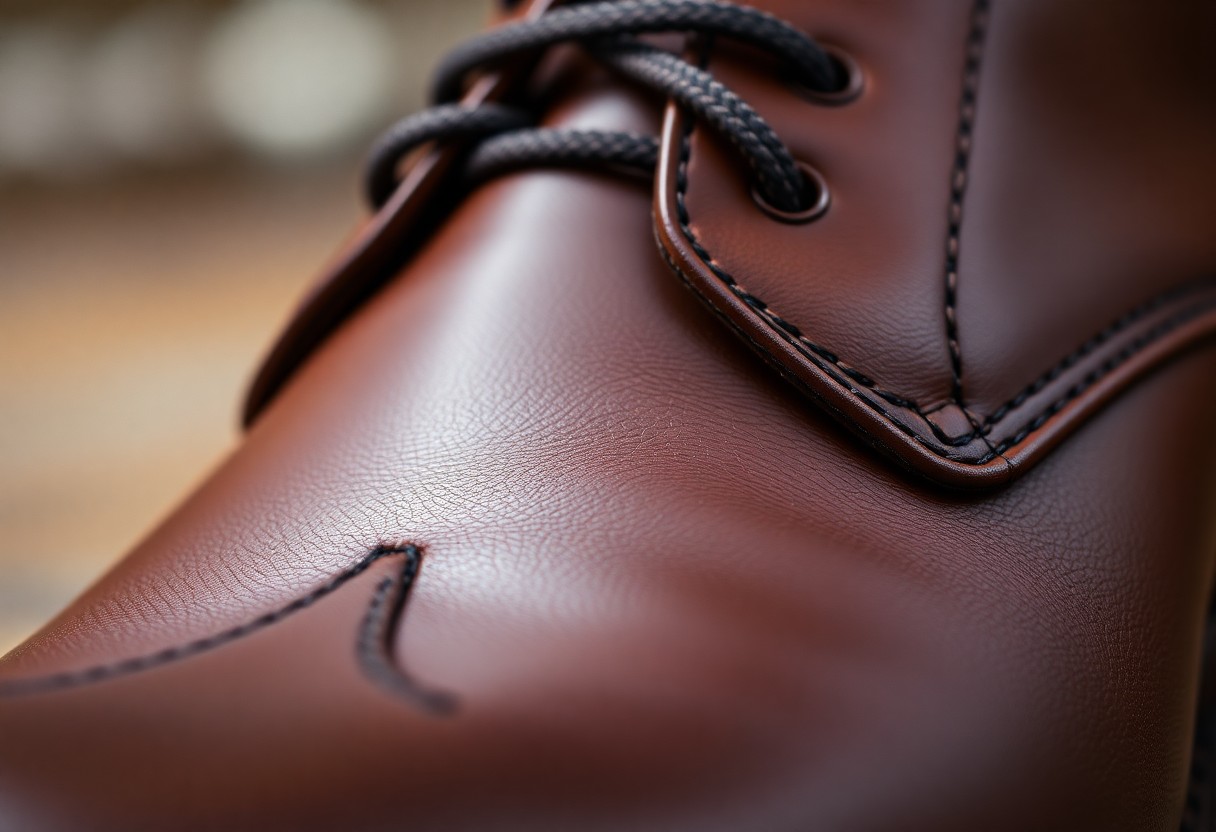
Many shoe enthusiasts often find themselves puzzled by the differences between apron front and split toe seam variations. Understanding these design elements is crucial, as they are essential features that define the quality and style of your footwear. From intricate pie crust stitching to the sophisticated reverse skin stitching, this comprehensive guide will empower you to identify and appreciate the various seam types. Whether you are scrutinizing loafers or split toe derbies, your ability to recognize quality craftsmanship hinges on your knowledge of these distinctive features. The construction methods can vary widely, from basic machine-made seams to premium hand-stitched details that enhance both the functionality and visual allure of your shoes.
Gain Expertise in Understanding Seam Types for Footwear
Acquiring a solid understanding of apron front and split toe seams is crucial for discerning quality in shoemaking. These elements intricately combine functional and decorative aspects within shoe construction, necessitating specific techniques and tools for effective execution. Familiarity with these foundational concepts will enhance your appreciation of the craftsmanship involved and will better prepare you for making informed choices when selecting footwear. By mastering these details, you will not only elevate your personal style but also gain insight into the artistry behind each design.
Understanding the Key Differences Between Apron Front and Split Toe Designs
To fully grasp these components, it is vital to recognize that an apron front refers to the leather piece that forms the shoe’s tongue, extending elegantly to the toe. In contrast, a split toe design involves two leather pieces seamlessly joined at the toe tip. Notably, while shoes can feature an apron without incorporating a split toe, most split toe designs are enhanced by the presence of an apron. Understanding these definitions will greatly aid in your appreciation of shoe designs and will allow you to make educated choices when purchasing your next pair.
Familiarizing Yourself with Essential Terminology in Shoe Craftsmanship
It is important to familiarize yourself with terms such as pie crust stitching, skin stitching, raised lake, and round closing. Your comprehension of these terms will empower you to distinguish between different seam types and their respective construction methods. Key terminology includes the ‘lake,’ which refers to the seam that attaches the apron to the shoe, and the ‘grain side,’ denoting the outer surface of the leather. Enhancing your vocabulary in this area will significantly improve your ability to engage in discussions and practical work involving these techniques, ultimately enriching your overall shoe knowledge.
Basic terminology is fundamental; for example, understanding the ‘lake’—the seam connecting the apron to the shoe—is essential. Additionally, the term ‘grain side’ pertains to the outer leather surface. Your familiarity with these terms will not only bolster your knowledge but will also enhance your discussions and practical applications regarding shoemaking techniques. By grasping these definitions, you can converse more confidently with other enthusiasts and professionals in the field.
Essential Tools and Materials for Seam Construction Success
To embark on your shoemaking journey, a minimal amount of equipment is required. You will need high-quality leather, appropriate needles, thread, and essential leather working tools. The success of your projects largely depends on your careful selection of materials tailored to your specific designs. Opting for premium materials will set the foundation for your craftsmanship, ensuring that your finished products not only look exceptional but also stand the test of time.
It is crucial to equip yourself with the right tools, including leather skiving knives, awls, and specialized needles that cater to your specific needs. The thickness of the thread and the quality of the leather will play a significant role in determining the final outcome of your work, making their selection paramount for successful seam construction. Investing in quality tools will enhance your efficiency and precision, leading to a more professional finish.

Discovering the Diversity of Leather Seam Types in Shoemaking
In the world of shoemaking, different leather seams come in a multitude of styles, each serving unique purposes within shoe construction. The range of seam types varies from basic plain lapped seams to intricate round closing techniques. The choice of seam not only influences the aesthetics of the shoe but also its overall durability and functionality. Understanding these nuances will empower you to select the right seam type based on your personal style and practical needs.
| Seam Type | Primary Use |
|---|---|
| Plain Lapped | Basic upper construction |
| Raised Lake | Apron fronts |
| Split Raised | Decorative elements |
| Round Closing | Premium construction |
| Skin Stitch | High-end finishing |
Exploring the Benefits of Single Piece Leather Seams
In your exploration of single piece constructions, you will discover that these seams provide clean lines and simplify assembly. The leather is folded and stitched in a continuous manner, effectively minimizing weak points and creating a seamless appearance that enhances both durability and aesthetic appeal. This technique not only streamlines the construction process but also adds a touch of sophistication to your footwear.
Understanding the Advantages of Two-Piece Leather Seams
When working with separate leather pieces, these seams demand precise alignment and careful skiving. The joining of these pieces creates distinct visual elements while ensuring the structural integrity of the shoe design. The two-piece construction allows for greater design flexibility, enabling you to create interesting pattern combinations that not only enhance visual appeal but also contribute to the overall durability of your footwear when executed correctly. Mastering this technique can elevate your shoemaking skills, resulting in unique and personalized designs.
Utilizing two-piece constructions enhances your design possibilities, as it allows for creative combinations of patterns and textures. When executed with precision, these techniques can lead to shoes that are not only visually striking but also exceptionally durable, ensuring a long-lasting product that stands the test of time. This duality of function and beauty is what makes two-piece seams a popular choice among skilled shoemakers.

Your Comprehensive Step-by-Step Guide to Seam Construction Techniques
While mastering the techniques behind apron front and split toe seams may seem complex, you can achieve proficiency through meticulous attention to detail and consistent practice. Your success will largely depend on adhering to established steps and utilizing the appropriate tools for each phase of construction. Following a structured approach will not only enhance your skills but also increase your confidence in creating high-quality footwear.
| Basic Tools | Special Equipment |
| Leather needle, Thread, Awl | Skiving knife, Punching tool |
Preparation and Planning: The Foundation for Successful Seam Construction
Preparation plays a critical role in ensuring successful seam construction. You will need to accurately mark your stitching lines and ensure that your leather pieces are properly skived for optimal results. Always conduct a test on scrap leather first to hone your skills before committing to your final project. This initial step is crucial for identifying potential issues and refining your technique before working on your primary materials.
Mastering Basic Techniques for Effective Stitching
When embarking on the journey of seam construction, begin with mastering basic stitching techniques that focus on maintaining proper thread tension and consistent stitch length. It is essential to exert even pressure throughout the stitching process to achieve uniform results. By honing these foundational skills, you set the stage for more advanced techniques.
To execute a successful stitch, hold your needle at a 45-degree angle, ensuring that the spacing between stitches remains consistent. Proper thread tension is crucial; it should be firm yet not overly tight to avoid compromising the integrity of the leather. Practicing these basic methods will yield better results as you progress to more intricate designs.
Advanced Techniques to Elevate Your Seam Construction Skills
- Split raised lake construction
- Round closing techniques
- Center cord installation
- Decorative side seams
| Technique | Difficulty Level |
| Split raised lake | High |
With advanced seam construction, you will skillfully combine various techniques to create professional-grade finishes. These intricate methods necessitate precise control and extensive practice to master, ensuring that your craftsmanship stands out. By continuously refining your skills, you can achieve exceptional results that highlight your dedication to the art of shoemaking.
Identifying Key Quality Factors in Seam Construction
Understanding the fundamental elements of seam construction and material preparation is essential for making informed decisions regarding shoe quality. Your focus should primarily be on stitch density, leather thickness, and seam alignment. While these factors may vary based on style, the proper execution of each directly influences both the aesthetic appeal and durability of the final product. By paying attention to these key details, you can ensure the longevity and functionality of your footwear.
Choosing the Right Materials to Ensure Seam Quality
When selecting leather for apron front and split toe seams, the little details make a significant difference. You must opt for full-grain leather that exhibits consistent thickness and possesses adequate tensile strength. The leather should provide good flexibility while sustaining its structural integrity. Your material choice will directly impact both the appearance of the seam and its longevity, making it a vital decision in the shoemaking process.
Stitching Methods That Yield Optimal Results
For the best outcome, hand-stitching typically offers superior control and precision compared to machine stitching. The strength of your seam is determined by careful thread tension and stitch spacing. When stitching, considerations such as thread thickness, needle size, and hole spacing are critical to achieving optimal results. By prioritizing these aspects, you can enhance the quality and durability of your seams.
It is imperative to ensure even tension throughout the seam to prevent any potential weak points from forming. Additionally, the angle of stitching can significantly affect both the strength and overall appearance of the finished product. Mastering these techniques will lead to superior craftsmanship and enhanced product quality.
Enhancing Durability Through Proper Techniques in Seam Construction
Focusing on proper reinforcement and stress point protection is essential for achieving long-lasting results. The durability of your seam heavily relies on appropriate thread selection and meticulous execution of stitching techniques. By integrating these practices, you can create seams that withstand daily use and maintain their integrity over time.
Being aware of wear patterns allows you to identify potential weak points in your seams. Pay close attention to thread quality, knot security, and leather preparation. Additionally, the depth of stitching is vital in preventing seam failures during regular use. Adopting a proactive approach to seam durability will ensure your shoes remain in excellent condition for years to come.
Expert Tips for Achieving Superior Craftsmanship in Shoemaking
Successful shoe craftsmen emphasize precision and technique when creating apron front and split toe seams. Achieving success depends on proper tool selection, thorough leather preparation, and maintaining consistent stitch tension. Recognizing quality materials and appropriate thread thickness is essential for accomplishing professional-grade results. By integrating these elements into your workflow, you can elevate your craftsmanship to new heights.
Professional Techniques for Mastering Seam Work in Footwear
To master seam work effectively, consider utilizing sharp tools, keeping your leather at optimal moisture levels, and practicing consistent stitch spacing. It is advisable to always test your techniques on scrap leather before proceeding to your final pieces, ensuring that you achieve the desired results. This practice will help you refine your skills and build confidence in your abilities.
Avoiding Common Mistakes in Seam Construction for Better Outcomes
In the realm of seam work, common pitfalls include rushing the process and mismanaging thread tension. Your diligence in leather preparation and tool maintenance will help prevent many of the most frequent issues encountered. By taking the time to carefully execute each step, you can avoid errors that may compromise the quality of your seams.
To execute a successful seam, avoid uneven stitching, improper leather skiving, and incorrect hole spacing. Always ensure to review your work under adequate lighting and maintain steady hand pressure throughout the entire process to achieve optimal results. Developing a keen eye for detail will contribute to your overall success in shoemaking.
Guidelines for Effective Tool Maintenance in Shoemaking
Neglecting tool maintenance can significantly impact the quality of your seams. Regular cleaning and sharpening of your tools are necessary to maintain their optimal performance and ensure consistent results in your craftsmanship. By prioritizing tool care, you can enhance the efficiency and quality of your shoemaking process.
To prevent damage to your work, keep your workspace clean and organized. Tools should be stored appropriately and regularly inspected for signs of wear that could adversely affect the quality of your seams. This proactive approach will ensure that you are always prepared to create exceptional footwear.
 Here’s the structured content for your blog post:
Here’s the structured content for your blog post:
Thoroughly Evaluating the Pros and Cons of Different Seam Types
Your understanding of diverse seam types will empower you to make informed choices regarding shoe construction and personal style preferences. Each seam type presents its own set of advantages and limitations, which can significantly impact the overall quality of your footwear.
| Pros | Cons |
|---|---|
| Enhanced durability with round closing | Higher cost for hand-stitched seams |
| Clean aesthetics with skin stitching | Limited repair options |
| Flexibility with plain lapped seams | Less water resistance |
| Strong construction with raised lake | Complex maintenance |
| Visual appeal of split raised lake | Time-intensive construction |
Aesthetic Considerations in Seam Selection for Footwear
When selecting seams, you will notice that visual impact varies significantly between types. For instance, plain lapped seams provide a clean and streamlined look, while raised lake seams introduce depth and character to the design. On the other hand, split toe designs enhance sophistication, and round closing techniques deliver a refined finish that many regard as the pinnacle of craftsmanship. Your choice of seam can greatly influence the overall aesthetic of your shoes.
Practical Considerations and Functionality of Different Seam Types
From a practical standpoint, your seam choice directly influences shoe performance. Round closing offers superior water resistance, making it suitable for various weather conditions, while plain lapped seams offer flexibility that can enhance comfort. Raised lake constructions strike a balance between durability and style, making them versatile for different footwear applications. Understanding these practical implications can guide you in selecting the right seam for your needs.
Factors affecting seam functionality include weather resistance, comfort, and the ease of repair. Each seam type demands specific care and maintenance to retain its structural integrity over time. By considering these factors, you can ensure that your footwear remains both stylish and functional.
Durability Comparisons Among Various Seam Types
| Seam Type | Expected Lifespan |
|---|---|
| Round Closing | 10+ years |
| Plain Lapped | 5-7 years |
| Raised Lake | 7-9 years |
| Split Raised | 6-8 years |
Aesthetic and practical considerations intertwine in the assessment of durability. Hand-stitched seams typically outlast machine-made alternatives, particularly in areas subjected to high stress. Consistent maintenance can significantly extend the lifespan of your seams, ensuring that your footwear remains in excellent condition. By prioritizing durability in your seam choices, you can invest in footwear that lasts.
Deepening Your Understanding of Various Seam Styles in Shoemaking
With these insights in mind, you are now better equipped to comprehend the various styles of apron front and split toe seams used in shoe construction. Your knowledge encompasses everything from basic raised lakes in single leather pieces to intricate round closing techniques that connect separate leather parts. You can easily differentiate between skin stitching, plain lapped seams, and decorative side seams. This guide serves as a valuable resource, enabling you to discern between seams crafted from one piece of leather and those that join two pieces, ultimately enhancing your decision-making when selecting quality footwear. Your understanding of these construction methods will undoubtedly lead to more informed choices in your shoe selection journey.
Common Questions Answered: Seam Types and Their Characteristics
Q: What distinguishes a raised lake in one piece of leather from a split raised lake?
A: A raised lake in one piece of leather employs stitching to create an elevated decorative seam with visible threads on both sides. Conversely, a split raised lake incorporates a cut groove in the raised portion, enhancing the visual division between shoe sections. This split version offers a clearer distinction and can be applied to both the lake and toe tip, adding a unique aesthetic touch.
Q: Can you explain what a round closing stitch is and why it is considered a mark of high quality?
A: A round closing stitch, also referred to as a butt stitch or skin stitch, connects two leather pieces edge-to-edge with stitching that penetrates halfway through the leather. This technique creates a robust seam that can often be invisible from the exterior when executed from the flesh side. Its exclusive handcrafting adds to its reputation for quality and durability, making it a preferred choice among artisans.
Q: How does a plain lapped seam differ from a raised lake seam?
A: A plain lapped seam positions one skived leather piece atop another, joining them via machine stitching. In contrast, a raised lake seam connects leather pieces flesh-side to flesh-side near the edges, generating an elevated seam that prominently displays leather edges. The raised lake design provides more visual detail and can be performed either by hand or machine, while plain lapped seams are generally machine-made and simpler in appearance.
The Article Guide to apron front and split toe seams understanding styles and craftsmanship appeared first on My Shoes Finder
The Article Apron Front and Split Toe Seams: A Craftsmanship Guide</a
Comments are closed


Your exploration of the differences between apron front and split toe seams truly highlights the nuances of shoemaking that often go unnoticed by the casual observer. As someone who has developed an appreciation for the intricacies of quality footwear over the years, I can attest to how understanding these seam variations has enhanced not only my shoe collection but also my overall appreciation of craftsmanship.
I really resonate with your take on seam variations in shoemaking. It’s fascinating how something as seemingly minor as the seam type can influence not just the aesthetics of a shoe, but also its fit and comfort. When I first started diving into quality footwear, I was amazed by how much thought goes into every detail, from the cut of the leather to the choice of thread.
I completely agree with you on the importance of seam variations in shoemaking. It’s interesting how such a small detail can hold so much weight in terms of not just appearance but also functionality. I remember the first time I tried on a well-crafted shoe—it felt like it was hugging my foot rather than just being something that I slipped on. The different seam styles can indeed impact how the shoe conforms to various foot shapes, which is crucial for comfort, especially if you’re on your feet all day.
It’s great to hear that you resonate with the nuances of seam variations in shoemaking. You’re spot-on about how seemingly minor details can make a significant impact not just visually, but also in terms of wearability and comfort. A shoe’s seams are often where the artistry of design intersects with the practical demands of functionality.
It’s fascinating how much detail goes into shoe design, especially with elements like apron front and split toe seams! I’ve always been drawn to the craftsmanship behind quality footwear, and understanding these seams really elevates the appreciation for the subtleties in style and functionality. I recently picked up a pair of loafers with a beautiful pie crust stitch; it not only adds character but also feels like a nod to traditional shoemaking techniques.